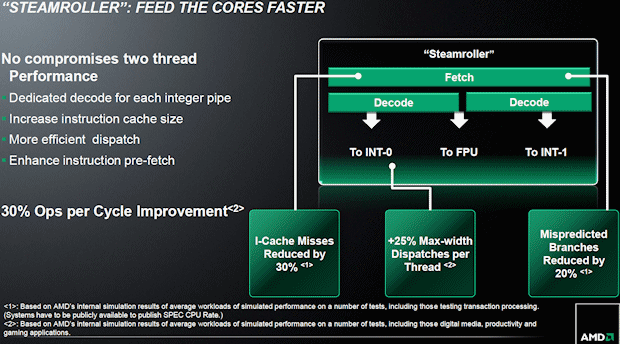
AMD's Steamroller architecture will offer tweaks to improve the performance of Bulldozer and Piledriver while reducing power consumption
One of Bulldozer's signature changes was the removal of what AMD saw as redundant hardware—instead of each CPU core having its own decode hardware, floating-point units, and L2 cache, these resources were shared between two cores, ostensibly to reduce the size (and thus, the power consumption) of the processor. Steamroller retains the shared FPUs and L2 cache, but backtracks a bit and provides each CPU core with dedicated decode hardware that AMD's slides claim will "feed the cores faster."
To compensate for the higher power consumption required by the decode hardware, AMD has taken steps to streamline the shared FPUs to reduce the amount of transistors the units need without impacting performance. The L2 cache has also been changed—the cache can now be "resized" (or even disabled entirely) by turning parts of itself on and off dynamically depending on the CPU's current workload. This is a natural extension of a power-saving trick that both Intel and AMD chips have been using for a while now—modern chips from both manufacturers can turn entire CPU cores off when they're not in use, saving power when devices are idling and giving the processors the thermal headroom they need to ramp up CPU speeds for single-threaded tasks (this is what Turbo Boost is all about).
Read 3 remaining paragraphs | Comments
DIGITAL JUICE

No comments:
Post a Comment
Thank's!